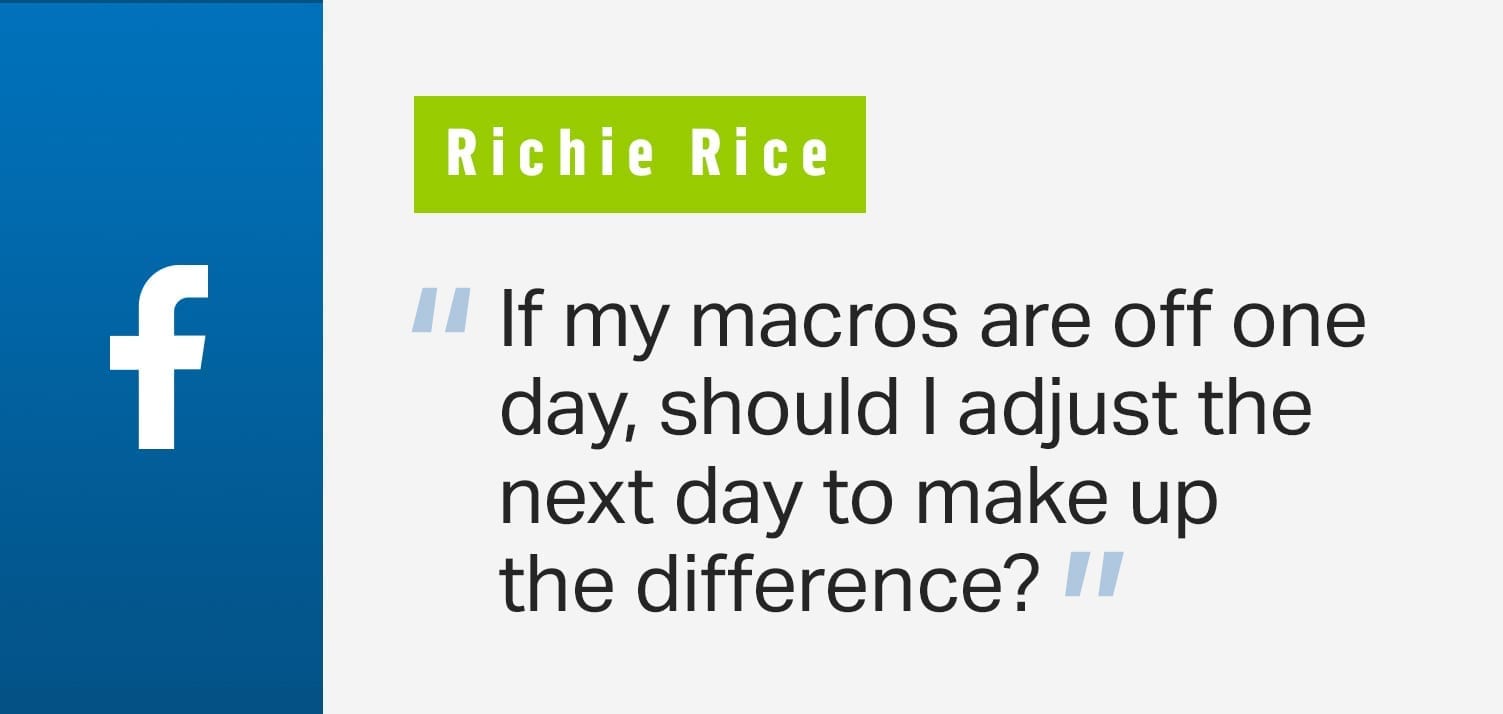
The three macronutrients — carbohydrates, protein and fat — are types of nutrients that make up the majority of what we eat. They’re essential to a healthy diet and many people choose to track their macronutrient intake to help with weight loss. Often called IIFYM — “If It Fits Your Macros” — this way of eating is increasingly popular for people who like accountability and flexibility. The idea behind it is to allot yourself a certain amount of each macro per day based on your overall calorie goal and consume various foods as long as you stay inside your macronutrient allowance. However, your body allows for off days, so if you’re macros are off one or two days, that doesn’t mean you have to make up the difference. It just means you should get back on track when you can.
HOW TO CALCULATE YOUR MACROS
Your macro goals should act as guidelines to help you achieve your objective, whether it is weight loss, building muscle or enhanced athletic performance. Counting macros takes a little trial and error since it’s highly individual and depends on lifestyle and genetic factors. A good idea is to start tracking your food intake on an app like MyFitnessPal, which can show you your current macronutrient breakdown. The app automatically sets your macros at 50% carbs, 20% protein and 30% fat. From there, you can adjust your targets as needed. For example, if weight loss is your primary objective, you might find it helpful to increase your protein intake and cut back on carbs or fat. Seeking guidance from a registered dietitian or other heath expert can be helpful to take your specific needs into account.
DO YOU NEED TO ADJUST MACROS IF YOU’RE OFF ONE DAY?
Consistency always beats perfection, so if you are serious about counting macros and reaching your goals, you shouldn’t worry about adjusting your macros after an off-day. Instead, take advantage of the opportunity to assess what happened; why you were off, and how you can better prepare yourself for tomorrow. Did you forget to meal prep? Did you sleep poorly and find yourself craving high-carb, sugary foods? Did your off day affect your energy levels?
If you find yourself off your macros more often than you are on, it’s possible this way of eating may not be for you. Counting macros takes patience and dedicated tracking.
HOW TO HIT YOUR MACROS
If you do want to track macros, here are a few tips for hitting your targets:
- Develop a running list of meals, foods and recipes that meet your macros. Aim for a list of 3–4 options at breakfast, lunch and dinner that you can interchange on different days or weeks. For example, here’s what 1,500 calories looks like on a macro diet, and here’s a sample 1,800-calorie day.
- Focus on food combinations. Think of combinations that have a mix of macros, while keeping it simple (no crazy long recipes needed, at least at first). For example, try overnight oats with apples and peanut butter; 5-ingredient spicy tuna wraps or a simple plate of pan-seared chicken and green beans. Fresh herbs, spices and seasonings are also a great way to amp up flavor without offsetting your count.
- Plan ahead. Off days happen most often when you aren’t prepared. Buy and meal prep foods in bulk, pre-portion your servings into small containers or bags, and have a running list of restaurant or cafe menu items that fit your macros for those days and nights when you are in a pinch, have to work late or just can’t cook at home.
- Keep track of everything using the MyFitnessPal App. Set your macro goals and log everything. The more you do it, the easier it gets.
THE BOTTOM LINE
Figuring out how to meet your goals is not something that happens overnight. Your calorie and macro needs are as unique as you are, and as your life changes so will they. Don’t worry if your macros were off a day or two — instead, look at the bigger dietary picture. For instance, while you can certainly find a variety of foods to meet your macros, it’s important to remember not all calories count the same. In other words, while jelly beans and sweet potatoes are both 100% carbohydrates, there’s no comparison when it comes to nutritional value.
For optimal nutrition, health and performance, you should prioritize high-quality protein (fish, eggs, lean meats, legumes), fiber-packed carbs (like whole grains, root vegetables and berries) and heart-healthy fats like olive oil, avocado, nuts and nut butters. Even if your macros are off, prioritizing whole foods 80% of the time along with regular movement helps you reach your goals and maintain a healthy lifestyle.
Make progress every day while you work on mini fitness and nutrition goals, like learning to track macros. Go to “Plans” in the MyFitnessPal app for daily coaching and easy-to-follow tasks to keep you motivated.




